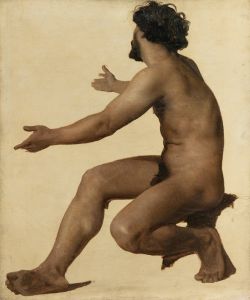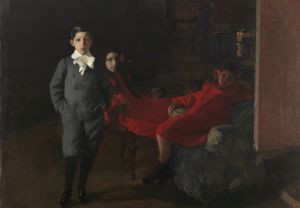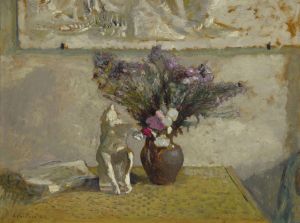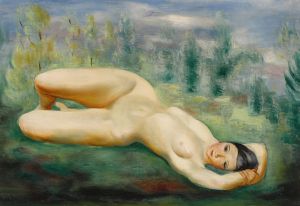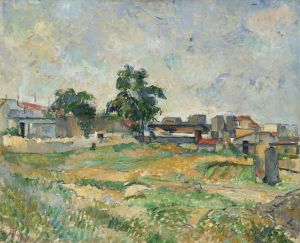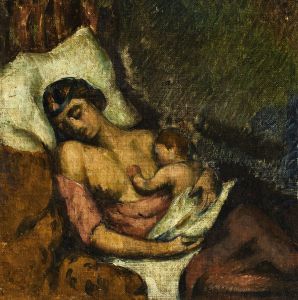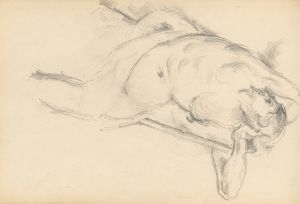
Madame Cézanne in a Yellow Chair
A hand-painted replica of Paul Cézanne’s masterpiece Madame Cézanne in a Yellow Chair, meticulously crafted by professional artists to capture the true essence of the original. Each piece is created with museum-quality canvas and rare mineral pigments, carefully painted by experienced artists with delicate brushstrokes and rich, layered colors to perfectly recreate the texture of the original artwork. Unlike machine-printed reproductions, this hand-painted version brings the painting to life, infused with the artist’s emotions and skill in every stroke. Whether for personal collection or home decoration, it instantly elevates the artistic atmosphere of any space.
Madame Cézanne in a Yellow Chair is an oil painting created by the French Post-Impressionist artist Paul Cézanne. The artwork is believed to have been painted between 1888 and 1890, during a period when Cézanne was deeply engaged in exploring portraiture and the depiction of human figures. The painting portrays Hortense Fiquet, Cézanne's wife and frequent model, seated in a yellow chair. Hortense appears in numerous works by Cézanne, as she was one of his most consistent subjects throughout his career.
The composition of Madame Cézanne in a Yellow Chair reflects Cézanne's characteristic approach to form, color, and structure. The painting is notable for its use of geometric simplification and subtle tonal variations, hallmarks of Cézanne's style that would later influence the development of modern art, particularly Cubism. In this work, Cézanne emphasizes the solidity and volume of both the figure and the surrounding space, creating a sense of balance and harmony. The yellow chair, which gives the painting its title, adds a vibrant contrast to the muted tones of Hortense's clothing and the background.
Hortense Fiquet is depicted with a calm and reserved expression, a common feature in Cézanne's portraits of her. The painting captures her in a seated pose, with her hands resting on her lap. The simplicity of her posture and the absence of elaborate details in the setting draw attention to the interplay of shapes, colors, and textures within the composition. Cézanne's brushwork is deliberate and methodical, with visible strokes that contribute to the overall structure of the image.
The painting is part of a series of portraits Cézanne created of Hortense, showcasing his evolving artistic techniques and his dedication to studying the human form. These portraits are often characterized by their introspective quality and the artist's focus on the formal aspects of painting rather than emotional expression. Cézanne's relationship with Hortense was complex, and while she served as a frequent subject, their personal life was marked by tension and distance. However, this dynamic does not overtly manifest in the painting itself, which remains a study in compositional balance and artistic experimentation.
Madame Cézanne in a Yellow Chair is currently housed in the collection of the Art Institute of Chicago, where it is displayed as part of its European painting collection. The work is considered an important example of Cézanne's contribution to the transition from 19th-century Impressionism to the modernist movements of the 20th century. Through this painting and others like it, Cézanne's innovative approach to form and perspective laid the groundwork for future developments in art.





